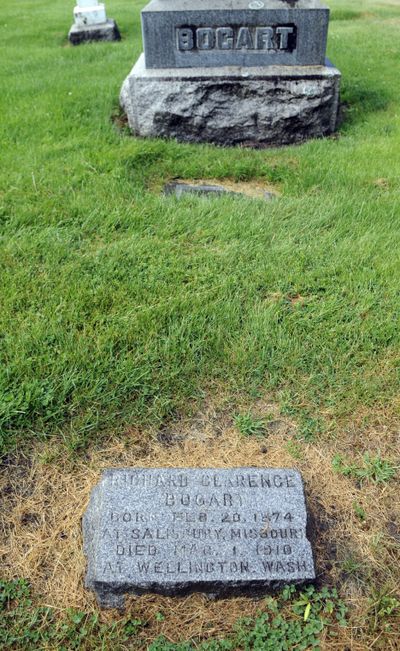Landmarks: Avalanche caused historic train disaster
Ten of 96 killed in 1910 are buried in area cemeteries

This special group of 10 includes a father and daughter, a nurse, a banker, railroad workers and others, ranging in age from 3 to 63. What they have in common is that they all died in the famous Wellington avalanche in the Washington Cascades in 1910 – and that they are buried in cemeteries in Spokane.
That avalanche on March 1, 1910, at the town of Wellington in Stevens Pass caused 96 fatalities in all and is known as one of the worst train disasters in American history and the worst natural disaster (in terms of lives lost) in the state of Washington.
It had been a heavy snowfall winter – much like the one experienced in the Inland Northwest just a few years ago – when two trains, the Great Northern Spokane passenger train No. 25 and Fast Mail train No. 27 left Spokane headed for the Puget Sound area on Feb. 22, 1910. The Seattle Express, pulled by an H-Class Pacific engine, consisted of two day coaches, a mail car, a baggage car and a stylish observation car where male passengers retired for the enjoyment of their cigars, drinks and card playing. The Fast Mail train left later, but caught up to the passenger train in the Cascade Tunnel in the mountains near Wellington, a small community made up largely of railroad employees, when weather conditions forced both of them to stop on Feb. 23.
The next day the trains moved out into the open, to a siding on an exposed slope under the peak of Windy Mountain above Tye Creek to wait out the storm. There had never been a slide there before and had they remained in the tunnel, engines would have to have been shut down or risk asphyxiation of the passengers. It was a fateful decision.
Normally the rotary snowplows capable of clearing drifts up to 13 feet deep on the tracks could have cleared the way, but snow was falling at such a rate that men had to hand shovel the tracks down to the 13-foot level before the rotaries could even begin work. At the nearby depot, snow was measured at 17 feet. And on top of that, the snow conditions created what was known as Cascade cement, snow so compacted and hard that it was nearly impossible to break through.
For six days the trains sat through blizzard conditions, and then the weather changed, turning to rain and sleet, thunder and lightning. Some passengers walked to Wellington and another town eight miles down the track. Most others stayed.
Just before 2 a.m. on March 1 a slab of snow – 10 feet deep, a quarter of a mile wide and half a mile long – broke loose from the mountain and knocked the trains 150 feet down into the Tye River Valley, also taking out the train depot in Wellington.
There were 23 survivors. The injured were taken to Wenatchee and the dead were removed by toboggans and transported by train to Seattle and Everett. Of the 96 fatalities, 35 were passengers, 58 were railroad employees on the train and another three were employees sleeping in cabins crushed by the avalanche.
It took 12 days to clear the tracks and not until 21 weeks later, late in July, was the last of the bodies recovered.
Interestingly, Wellington was soon after renamed Tye, and just seven months after the avalanche, a concrete snow shed was built to shelter the train depot. That depot was closed in 1929 when a new Cascade tunnel was constructed, and the old Wellington grade is now a hiking trail, called the Iron Goat Trail (locomotives were referred to as iron goats), and hikers can still see remnants of the rail lines and snow sheds there.
Five of the 96 who died in the avalanche are buried at Greenwood Memorial Terrace in Spokane. They include Richard Clarence Bogart, 63, a mail clerk; George Hoefer, 29, also a mail clerk; passenger Henry D. Chantrell, 50; and passengers George F. Davis, 35, and his young daughter Thelma, 3. The grave marker of Richard Bogart is the only one that notes the place of death – Wellington.
Five others are buried at Spokane’s Fairmount Memorial Park. They are Lee D. Ahern, 24, a mail weigher; John C. Tucker, 38, a mail clerk; passenger Richard Barnhart, 47; Charles S. Eltinge, 56, a banker; and Catherine O’Reilly, 28, a nurse.
Interesting to note, one passenger who held a ticket through to Seattle decided to disembark, for reasons that are not recorded, in Leavenworth, before the ill-fated climb through the Cascade Mountains. That decision saved her life.